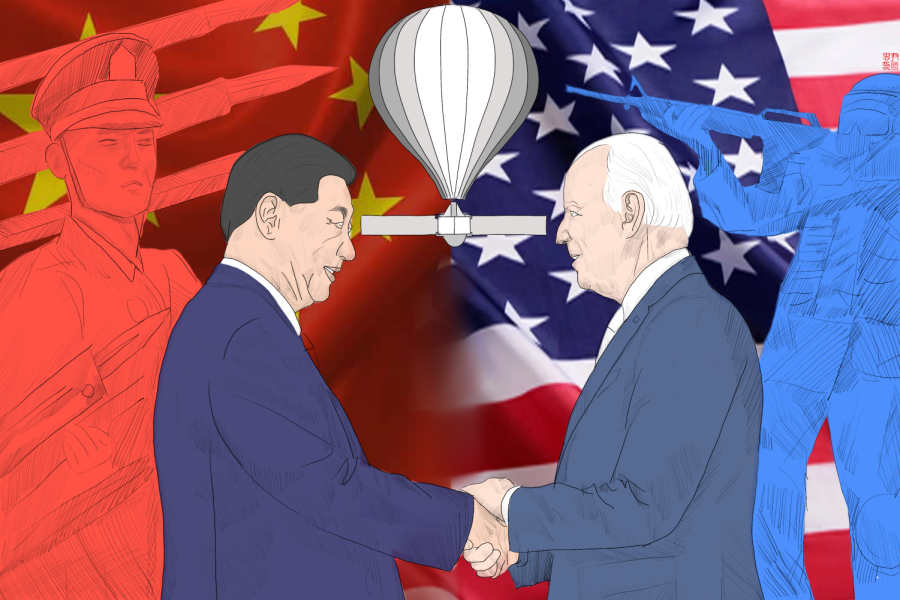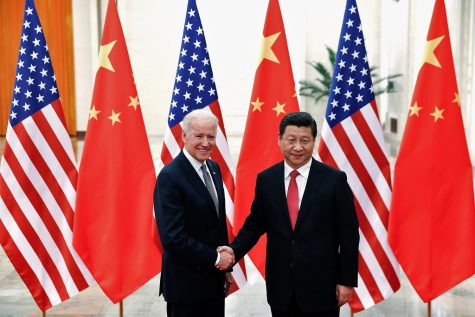
President Joe Biden ordered three unidentified flying objects shot down over a three-day stretch this month and called off the search for two of those objects this past week, according to NPR. These takedown orders came after a Chinese spy balloon flew over the Pentagon and was shot down on Feb. 4, officially setting off a diplomatic crisis.
While there is no confirmation of what the objects were or where they came from, according to The New York Times, U.S. officials are confident that the objects were unlikely to be surveillance devices.
During his press briefing on February 16, Biden confirmed that they likely served a commercial or recreational purpose, citing that there was no evidence for the “sudden increase in the number of objects in the sky.” While Biden’s endless reassurances are anything but reassuring, the president has confirmed that he plans to speak with the Chinese president, Xi Jinping, about the spy balloon.
The nefarious Chinese “weather” balloon
On January 28, a large Chinese surveillance balloon, the size of approximately three buses, entered Alaskan airspace. Pentagon officials confirmed that the balloon drifted from Idaho to the Carolinas before it was shot down at the coast of South Carolina.
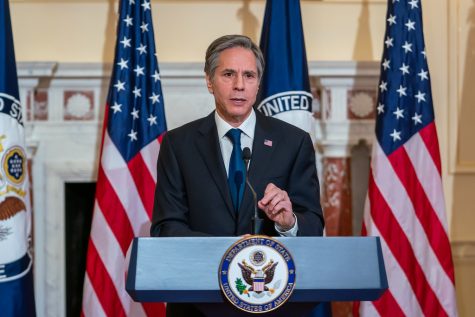
The incident prompted Antony Blinken, the Secretary of State, to cancel his high-profile diplomatic visit to Beijing. Blinken issued a statement accusing China of deliberately flying the balloon over the U.S. as he called it “both unacceptable and irresponsible.”
“I made clear that the presence of this surveillance balloon in US airspace is a clear violation of US sovereignty and international law, that it’s an irresponsible act and that the PRC (People’s Republic of China) decision to take this action on the eve of my planned visit is detrimental to the substantive discussions that we were prepared to have,” Blinken said during a press meeting.
China has maintained that the device was a weather balloon that strayed into American airspace.
During a regular briefing, Chinese foreign ministry spokesperson, Wang Wenbin, evaded questions about the trajectory of the balloon. Instead, insisting that the United States should not “overreact.”
U.S. officials monitored the balloon’s path and concluded that the device did, in fact, stray from its intended destination: Guam, where the Chinese government intended to collect intelligence on U.S. military bases in Hawaii and nearby U.S. overseas territories.
After the balloon lifted off from Hainan, China, it made its way across the Pacific but unexpectedly crossed to Alaska, Canada, and then the U.S., through Montana and was later shot down in South Carolina.
Officials suspect that China might have been able to maneuver the balloon over to loiter over sensitive sites and collect intelligence. According to the New York Times, the balloon was equipped with an antenna which could pinpoint the locations of secure communications devices and was capable of intercepting any calls on those devices.
Why send the balloons?
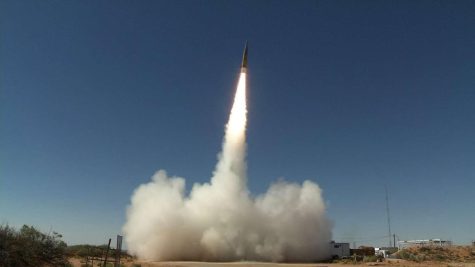
The Chinese government has been wary of American military and technological developments – especially in space. Fearing America’s supposed interest in the “space wars,” China has begun to amp up its airships, satellites, and aeronautical weaponry in preparation for a great war.
In 2018, the Liberation Army Daily, the official newspaper of the Chinese military, published an article that claimed that “space has become a new battleground in modern warfare.” In 2020, the same newspaper published, “Some countries across the world have been accelerating the pace of near-space weapons research, [near-space airships] are not constrained by orbital mechanics and do not need expensive surface launch facilities.”
China has already experimented with using rockets to send similar surveillance balloons up to 25 miles above Earth. The Chinese government has funded a section of the Chinese military, known as the Strategic Support Force, to oversee space programs.

It seems, however, that the Chinese military’s fears have gone in vain, as the American government has generally ignored the near-space zone that Chinese officials speak of. Much of the U.S.’ space-related budget is used to deploy assets into distant outer space. According to the American Institute of Physics, a majority of the U.S.’ space-related budget goes to scientific research, human exploration, and space operations such as satellite maintenance. Despite investing approximately $25 billion to space-related operations, the only $1.1 billion funds went to furthering space warfare in 2022.
Nevertheless, a U.S. intelligence report sent to Congress this January indicated that the military has spotted numerous unidentified flying objects in the near-space region. Many Americans have voiced their concerns about unidentified objects hovering over the American horizons, but the U.S. government has done little to increase their technological warfare development and surveillance monitors.
It is clear that China currently has an upper hand in innovating, as proven by their success within hypersonic missile development and surveillance technology. So why isn’t the U.S. government concerned?
The implications and complications
Despite the various violations of international conduct on China’s part, the United States is still pushing for diplomatic measures.
Diplomatic relations between the U.S. and China have been nothing short of icy since the shooting down of the balloon, which the Chinese have insisted was not intended for spying.
While the spy balloon posed little actual threat to the United States, the surveillance device was a clear breach of international law. The U.S.’ inability to recognize the threat that the device posed, as well as their late response to the conflict puts it in a precarious situation.
The United States, the supposed global hegemon and leader of security technologies, failed to recognize the threat of a foreign surveillance balloon until the device had flown over the nation for over two days.
Nevertheless, officials on both sides of the conflict worry that the United States has now reached a diplomatic impasse.
“Last week’s Balloon Crisis will have a significant impact on bilateral relations and certainly U.S. public opinion, political debate and policies toward [China],” said Roman Schweizer, a managing director for aerospace and defense at Cowen and Company’s Washington Research Group, in a report published by CNBC. “Countries spy on each other — on enemies and friends, using all sorts of methods and tech. Getting caught is the risk … The Balloon Crisis has likely embarrassed the PRC enough that they will seek to retaliate, change the narrative or, simply put, make the U.S. look bad somehow.”
Schweizer predicts that on the U.S. side, the Biden administration will be pressured to take a tougher stance on the conflict.
No diplomatic solution
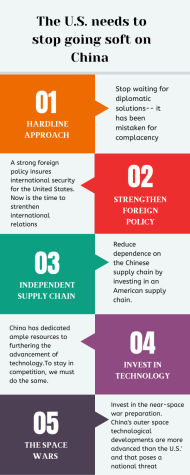
Contrary to the hopes of the Biden administration, there may not be a diplomatic solution for the tensions between the U.S. and China.
A report published by Pew Research Center has concluded that a majority of Americans view the Chinese government in an unfavorable light. Hence, the recent events have sparked a new feeling amongst Americans: fear.
It is clear that the United States needs to adopt an offensive stance against China. This means the strengthening of American alliances, especially within N.A.T.O. and in the South and East Asian regions. This is especially relevant because China has formed various strong alliances such as B.R.I.C.S. (Brazil, Russia, India, China, South Africa) and has garnered support from the U.S.’ staunch enemies.
It is necessary that the United States needs to reduce its dependence on the Chinese manufacturing chain and create an independent supply chain that would be controlled and operated by Americans. This not only ensures the creation of new jobs in the United States, but it solves the problem of America’s overreliance on the Chinese supply chain.
The most important development that the United States needs to invest in is the advancement of the technological sector to combat China’s control over the indirect microchip war.
Furthermore, the United States needs to cut down on unnecessary military organizations and restructure its military to become more cost efficient and more technologically sustainable. China’s readiness and preparedness for a near-space conflict is a threat to not just U.S. hegemony, but the security of the nation.
It’s time for the U.S. government to stop beating around the bush, hoping for a diplomatic out regarding its conflicts with China. The United States’ lenience with Chinese breaches of international law is setting a precedent of weakness.
China has been testing the waters, searching for loopholes within the American-dominated global system. The future’s looking bleak for the United States, but it isn’t too late for the administration to shift its priorities towards strengthening its foreign policy.
The U.S., leader of the free world, the current global hegemon, still has the opportunity to amend its faults and take on an offensive stance against China, so why are we sitting idle, essentially handing China the reins to control the future of global politics?

